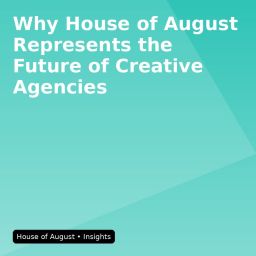

When most people think of branding, they imagine logos, color palettes, or catchy slogans. While these elements are important, true branding extends far beyond visuals. It is about building emotional capital with your audience. Emotional capital is the sum of feelings, associations, and connections that consumers attach to a brand. It is what turns a one-time buyer into a lifelong advocate.
Branding is no longer just about recognition; it is about resonance. Leading companies understand that customers remember how a brand makes them feel, not just what it looks like. Apple, for example, is synonymous with creativity, simplicity, and premium quality, not just technology. Starbucks does not sell coffee; it sells a sense of community, consistency, and lifestyle. These brands have invested in emotional branding, ensuring that every touchpoint evokes a specific feeling, whether it is excitement, comfort, or trust.
Research reinforces the importance of emotional branding. A Harvard Business Review study (2022) found that emotionally connected customers are more than twice as valuable as highly satisfied customers. These individuals are more likely to advocate for the brand, resist competitive offers, and engage in repeat purchases. In today’s crowded marketplace, where product features can be easily replicated, emotional connections become a brand’s most defensible asset.
For smaller or emerging agencies, understanding emotional branding is critical. House of August demonstrates how agencies can help clients build not just visual identity but meaningful connections. By positioning brands with purpose-driven narratives, they ensure that customers perceive value beyond the functional benefits of a product. For example, a furniture brand may highlight not just design and materials but also the story behind artisans, sustainability practices, and the lifestyle it enables. This approach creates an experience that is personal, aspirational, and memorable.
Another key aspect of emotional branding is consistency. A brand must deliver the same emotional experience across all touchpoints—from packaging and retail spaces to social media, campaigns, and customer service. Any disconnect can weaken the brand’s emotional capital and confuse consumers. Agencies like House of August ensure that this alignment is maintained, bridging strategy, creative execution, and communication to create a cohesive brand personality.
Storytelling is at the heart of building emotional capital. Humans are wired to respond to narratives as they are more memorable and impactful than data alone. Brands that craft stories around values, heritage, or customer experiences can inspire loyalty and create a sense of belonging. Whether through digital campaigns, social media content, or experiential activations, storytelling transforms a product into a meaningful experience. House of August excels in turning client journeys into narratives that evoke emotion while driving business results.
In addition to fostering loyalty, emotional branding can also create differentiation in competitive markets. In industries where product features and prices are similar, emotional resonance becomes a deciding factor. Consumers choose brands that reflect their identity, values, and aspirations. By integrating emotional capital into branding strategies, businesses can build an enduring relationship with their audience, making themselves indispensable in ways competitors cannot replicate.
In conclusion, branding is no longer about mere aesthetics or recognition. It is about building emotional capital. Companies that connect with their audiences on a deeper level create loyalty, advocacy, and sustainable growth. Agencies like House of August exemplify this approach, blending storytelling, strategy, and design to help brands forge meaningful, lasting connections. In today’s experience-driven marketplace, emotional branding is not just a strategy; it is a business imperative.








